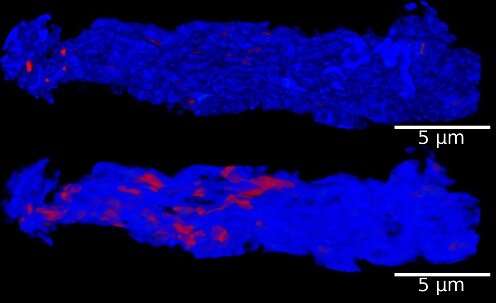Needleless vaccine will protect children from dangerous viruses

Orally administered vaccine can protect millions from hepatitis B. Oral vaccines are both safer and less expensive than injections. Therefore, researchers are continuously pursuing ways to produce an oral vaccine that is sufficiently effective. Now, University of Copenhagen physicists have delivered virologists a "recipe" for improving vaccine drops using methods from the world of nanophysics.
Millions of people are infected with hepatitis B every year. Hundreds of thousands die. And small children are particularly at risk. Due to high cost and the stable environmental conditions required for vaccine storage, many people in developing countries are not vaccinated against this dangerous virus. As such, researchers have been working to produce a drop or powdered form of oral vaccine. Oral vaccinations are cheaper and more easily administered than injections. However, developing a sufficiently effective oral hepatitis B vaccine has so far eluded researchers.
A joint collaboration from physicists at the Niels Bohr Institute, a team of researchers from University of São Paulo together with the Butantan Institute has introduced a technique to the pharmaceutical world that just might do the trick and lead to an optimal oral Hepatitis B vaccine.
"We have used a technology commonly used in solid state physics to explore how the vaccine behaves within a particular type of encapsulation. This has yielded crucial information that would not otherwise have been achievable. When we scientists venture beyond our comfort zone and deploy each other's knowledge across disciplines, entirely new possibilities can emerge," says Heloisa Bordallo, an associate professor at the Niels Bohr Institute, and one of the two main authors of the research article just published in Scientific Reports.
Three dimensional insight
A major challenge of making an oral vaccine is to encapsulate it in a material that can endure the harsh conditions of our digestive system, to protect the vaccine from being destroyed before it reaches its intended destination in the body. The Danish research team's collaborative partners in Brazil have long known that the silica-material SBA-15 is well-suited to encapsulate a hepatitis B vaccine. However, they did not know exactly how the material protected the vaccine. Nor were they certain about why their vaccine was not always completely effective.
This is where the team of Danish physicists came into the picture. Using a special technique that combines X-ray and neutron imaging, researchers at the Niels Bohr Institute were able to produce 3-D images of the inside of the SBA-15 silica. It marked a crucial step in the use of this technique to develop pharmaceuticals. The imagery allows researchers to see how the vaccine behaves inside the silica, right down to the particle scale. Among other things, they were able to see that the vaccine had a tendency to clump within the silica, making it less effective.
"Now we know what makes the vaccine less effective, and how to optimize it. We know exactly how much vaccine should be put in the silica capsule for it to work best in the body and the clinical trials can be better interpreted," explains Heloisa Bordallo.
No more swelling and inflammation
The vaccine is particularly promising for developing nations, explains the other main author, Martin K. Rasmussen, a former student at the Niels Bohr Institute and current doctoral student at DTU:
"Getting rid of needles being poked into the arms of little children is an advantage in and of itself. It also eliminates any need to sterilize needles and possible side effects such as swelling and infection. And, unlike the vaccine in use today, this type of vaccine needn't be refrigerated. As such, costs will be reduced and the vaccine's administration will be eased."
The researchers hope that the 3-D technology will also be used to develop oral vaccines against several other types of disease. The goal of the Danish researchers' Brazilian collaborative partners is to produce a 6-in-1 oral vaccine against diphtheria, tetanus, whooping cough, polio, Hib and hepatitis B. The vaccine against diphtheria and tetanus is already being developed.
More information: Martin K. Rasmussen et al. 3D visualisation of hepatitis B vaccine in the oral delivery vehicle SBA-15, Scientific Reports (2019). DOI: 10.1038/s41598-019-42645-5


















